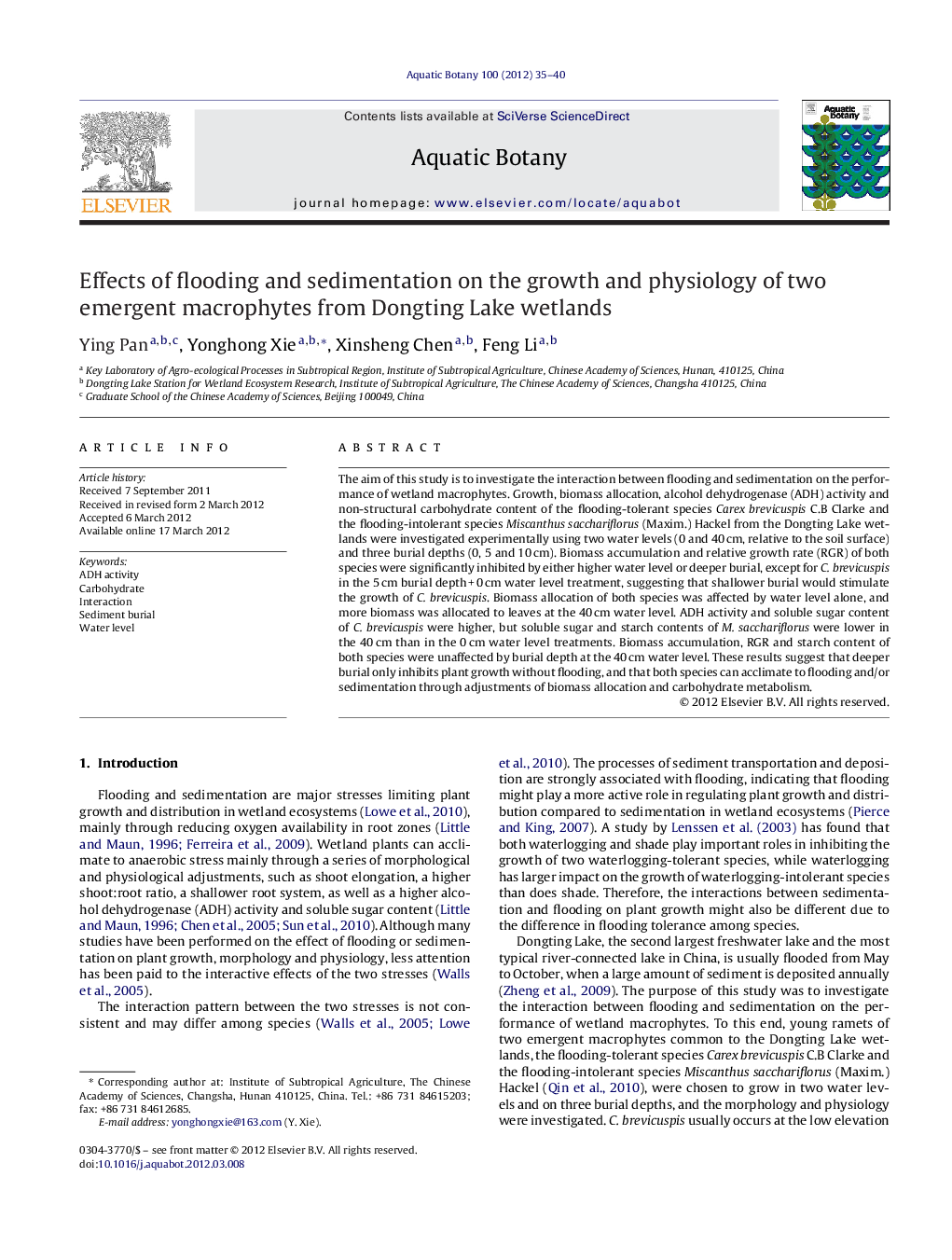| Article ID | Journal | Published Year | Pages | File Type |
|---|---|---|---|---|
| 4528031 | Aquatic Botany | 2012 | 6 Pages |
The aim of this study is to investigate the interaction between flooding and sedimentation on the performance of wetland macrophytes. Growth, biomass allocation, alcohol dehydrogenase (ADH) activity and non-structural carbohydrate content of the flooding-tolerant species Carex brevicuspis C.B Clarke and the flooding-intolerant species Miscanthus sacchariflorus (Maxim.) Hackel from the Dongting Lake wetlands were investigated experimentally using two water levels (0 and 40 cm, relative to the soil surface) and three burial depths (0, 5 and 10 cm). Biomass accumulation and relative growth rate (RGR) of both species were significantly inhibited by either higher water level or deeper burial, except for C. brevicuspis in the 5 cm burial depth + 0 cm water level treatment, suggesting that shallower burial would stimulate the growth of C. brevicuspis. Biomass allocation of both species was affected by water level alone, and more biomass was allocated to leaves at the 40 cm water level. ADH activity and soluble sugar content of C. brevicuspis were higher, but soluble sugar and starch contents of M. sacchariflorus were lower in the 40 cm than in the 0 cm water level treatments. Biomass accumulation, RGR and starch content of both species were unaffected by burial depth at the 40 cm water level. These results suggest that deeper burial only inhibits plant growth without flooding, and that both species can acclimate to flooding and/or sedimentation through adjustments of biomass allocation and carbohydrate metabolism.
► Flooding is a stronger environmental stress on plant growth than does sedimentation in both species. ► Carex brevicuspis might be more sensitive to anoxia than does Miscanthus sacchariflorus. ► Shallower burial (5 cm) can stimulate the growth of C. brevicuspis without flooding.
